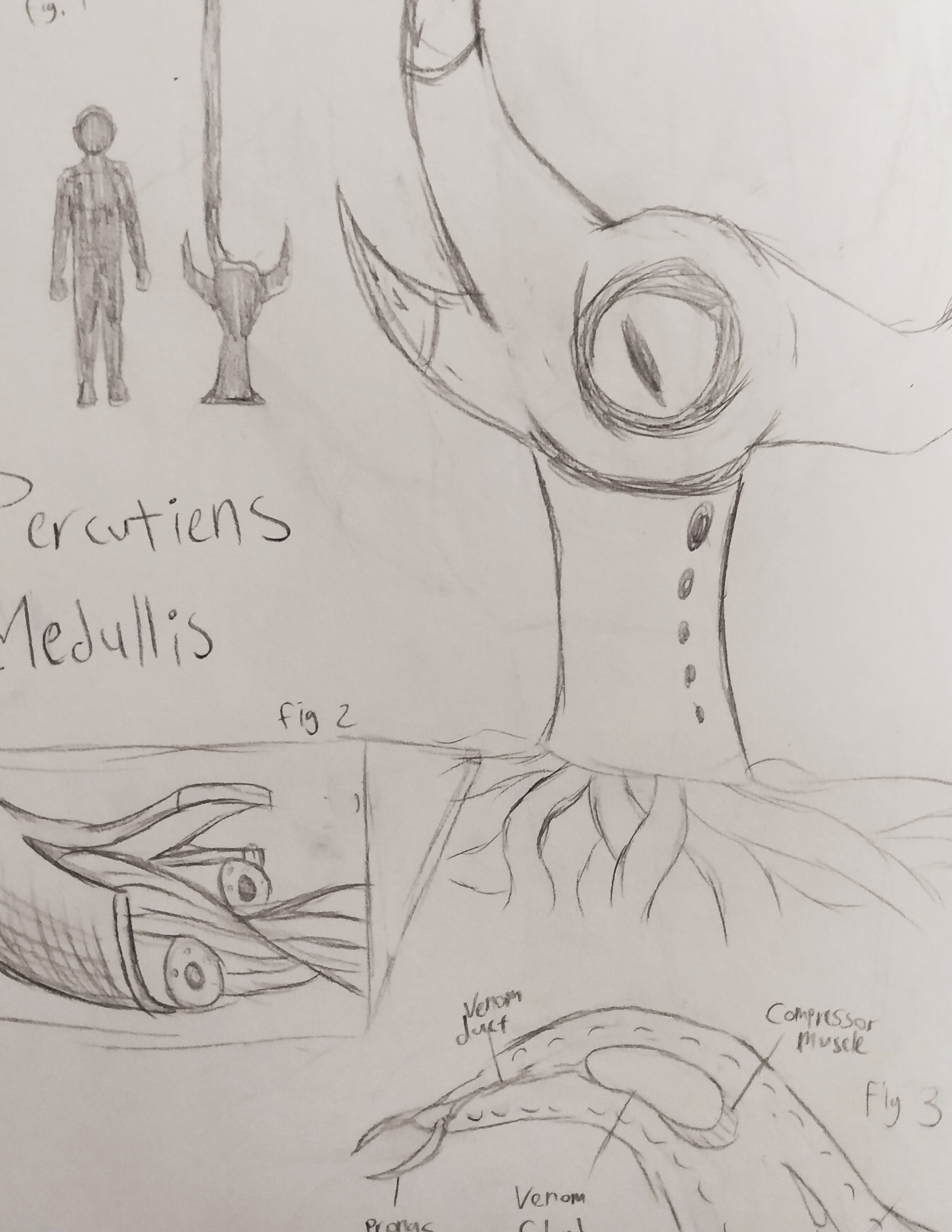Marrow Barnacles
Sometime in the early 2000s, there have been multiple reported sightings of these strange creatures popping up around the Northeast and Midwestern forests of the United States. Two-foot-tall stalks of flesh firmly rooted in the ground like weeds, covered in a hard boney armor with spiked tendrils protruding from the base, looking at you with a piercing stare through a single yellow eye. Those who got too close to these stationary creatures would be struck by their tendrils and leave with terrible wounds that took months to heal.

Nowadays, because of the number of sightings and observations from official biologists, these creatures, now regarded as Marrow Barnacles, are widely considered to be less of a cryptid and more of a newly discovered animal related to marine barnacles. Nature parks and trails that are reported to have these animals now have warning signs and instructional pamphlets to advise hikers and campers. Although they are dangerous, it is easy to kill the Marrow Barnacles, all it takes is a well-aimed shot with a rifle into their sensitive eyes. Despite this, their population stands strong, as they are able to asexually reproduce via mitosis, even after death. To prevent this, firmly grip the stalks underneath their bases and rip them off their roots.

Although the Marrow Barnacles now cement themselves as an animal coexisting with us, their origins are still a mystery. One popular theory is that they originate from both marine barnacles and human cancer cells hundreds of years ago. It was hypothesized that surgeons that worked near the coast in the 1700s would discard the dugout tumors of patients into the ocean, and barnacles from the docks would latch onto those clumps. Over time, the barnacles would fuse with the cancer cells and evolve into these growing fleshy forms in underwater caverns across the Great Lakes, until they would soon become amphibious as they dug their way to the surface.
